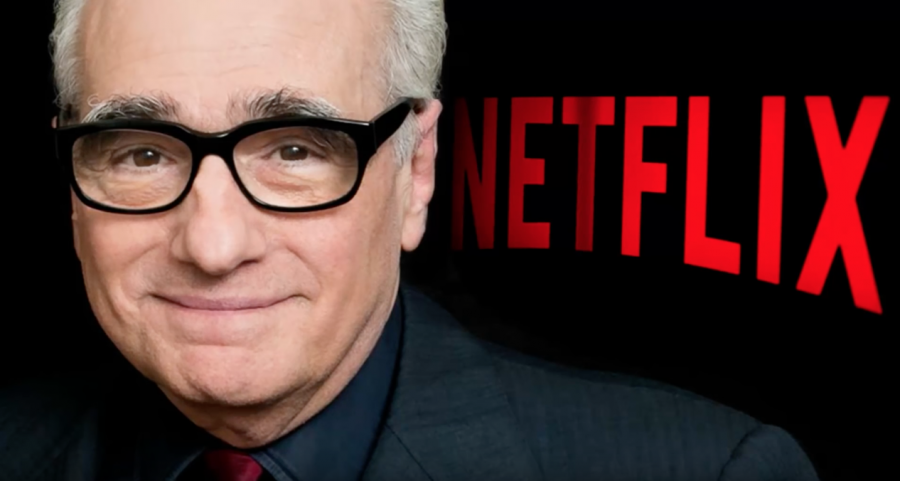The Blur Between Netflix and Film
April 6, 2017

In the 1930s, going to the movies meant donning your best evening attire — gowns , tuxes, the works. Even the theaters themselves were lavish, decorated with red velvet seats and gold-encrusted details. In the latter half of the 20th century, movie theaters evolved into a more commonplace attraction but remained still a prominent part of American life. And people now are abandoning theaters for their cellphone screens and laptops. It seems reasonable: why leave the comfort of your own home, when almost any film you can imagine is right at your fingertips? Especially with the almost ubiquitous Netflix, watching a movie is easier than ever before.
In February, it was announced that Netflix had acquired the rights to Martin Scorsese’s upcoming film “The Irishman,” starring Al Pacino and Robert De Niro. Had it been any other filmmaker, this would not have come as such a shock. Scorsese, however, has consistently been a proponent of the movie theater experience. In an interview at British Film Institute Southbank, he argued that “even watching a film at home on a big-screen TV, there is still stuff around the room. There’s a phone that rings. People go by. It is not the best way.” Netflix and other streaming services like Amazon had never been considered major contenders against Hollywood studios and movie theaters until recently. But with its constant release of original films and expansive library of old ones, Netflix seems to be the ideal medium for watching films whenever and wherever.
The streaming platform had more than 86 million subscribers in 2016 Many American households use this platform. What began as an updated, more efficient Blockbuster has transformed into its own unique Hollywood studio. When Netflix’s first original series “House of Cards” premiered, it established the streaming service as a competitor for such premium channels as HBO and Showtime. Since then, Netflix has moved to creating original films and has garnered numerous Golden Globe nominations. Netflix has now essentially replaced film, if it has not placed itself atop the same pedestal. Its success with producing original content not only threatens the cinema industry but also poses a potential problem for film as a whole: has Netflix become the preferred medium for serious artistry?
On the surface, Netflix is a fantastic tool for broadening one’s knowledge of cinema and experiencing a beloved art form. It’s accessible and allows more people — who can’t always go to a theater — to watch films. Netflix is on many levels equivalent to the original ideas behind filmmaking: tell a story and unite an audience. What it lacks, however, is the genuine and unparalleled experience of seeing a film in its traditional form.
To respect a movie as art and to appreciate the arduous process of filmmaking, you should see the film in a theater. Everything about a film is planned around the expectation that an audience will watch it on the big screen — the immensity of it, the grandeur, can easily be lost in translation when a film is adapted into a format that is more than 100 times more compressed than a theater screen. “Lawrence of Arabia,” a classic film that has cemented its place in cinema history since its 1962 release, is an epic masterpiece. It relies on and revolves around the deep expanses of the desert — a setting that also acts as one of the film’s most formidable antagonists. The audience in a theater feels consumed by the heaps of sand and senses the heat of the sun burning their skin. However, the enormity of the desert is lost on the viewer on a laptop.
It’s not a sin to watch a film on a laptop or a television, because there are not many movies available at a theater at any given time. However, it is undoubtedly true that viewers will have a tremendously better experience if they watch a film in the medium it was originally created for.
Unfortunately, a smartphone, a laptop or even a television cannot recreate the sensations of going to the cinema. A film isn’t just supposed to evoke a mental reaction, but also a physical one, and sometimes, that physical reaction can only be felt when the images are viewed on a vast screen. As technology continues to advance and spread throughout society, art will still persist. While Netflix will continue to rise and likely gain more subscribers, film and the cinema will not be left behind.
A version of this article appeared in the Thursday, April 6 print issue.
Email Daniella Nichinson at [email protected].

